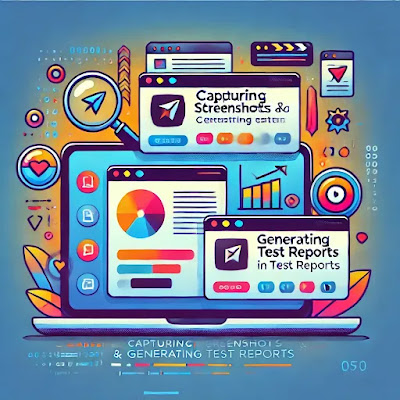How to Debug Playwright Tests: Best Practices and Tools
How to Debug Playwright Tests: Best Practices and Tools
When it comes to web development, testing plays a crucial role in maintaining the quality of the codebase. Playwright is a powerful end-to-end testing framework that allows developers to automate web tests across multiple browsers. However, like any testing framework, bugs and issues can arise. Learning to effectively debug Playwright tests is essential to streamline the development process and ensure efficient test execution.
In this article, we will explore the best practices and tools to help you debug Playwright tests like a pro. Whether you are new to Playwright or a seasoned developer, these techniques will help you identify and fix test issues faster.
1. Debugging Using Built-in Playwright Debug Mode
Playwright has a built-in debug mode that makes troubleshooting test failures easier. You can enable the debugging mode by setting the PWDEBUG environment variable to 1.
PWDEBUG=1 npx playwright testWhen running tests in debug mode, Playwright will automatically pause the test at any failing step, allowing you to inspect the state of the browser, interact with the DOM, and step through your test code.
Additionally, Playwright opens the browser in a non-headless mode, which means you can see what’s happening in real-time during the test execution.
2. Using playwright.inspect() for Manual Debugging
If you want to debug a specific point in your test, you can use the playwright.inspect() function. This method pauses the execution at a specified line of code, allowing you to inspect the current state of the test and browser.
await playwright.inspect();This is a useful approach when you need to analyze a particular step or want to validate the browser state at specific stages in your test.
3. Enabling Verbose Logging
Verbose logging helps you get more insight into what's happening during the test execution by outputting detailed logs. You can enable verbose logging by setting the environment variable DEBUG to playwright:*.
DEBUG=playwright:* npx playwright testThis will provide you with detailed logs, including browser actions, network requests, and Playwright commands, helping you pinpoint issues more effectively.
4. Using Browser Developer Tools for Debugging
Another powerful way to debug Playwright tests is by using browser developer tools. You can open the developer tools during test execution by launching the browser in non-headless mode:
npx playwright test --headedWith developer tools open, you can inspect the HTML, check the console logs, view network activity, and set breakpoints in the test code. This is especially helpful when debugging complex UI issues or checking the network calls made during the test.
5. Use Visual Comparisons with Screenshots
Playwright supports capturing screenshots at any point during test execution. This can be useful for visually debugging UI issues. You can capture a screenshot of the entire page or specific elements:
await page.screenshot({ path: 'screenshot.png' });Using screenshots can help you detect differences in UI rendering across browsers or between different states of the application.
6. Working with Tracing in Playwright
Playwright offers a tracing feature that records a trace of all interactions in a test. You can enable tracing and analyze the trace later to understand what went wrong during test execution.
await page.tracing.start({ screenshots: true, snapshots: true });
await page.goto('https://example.com');
await page.tracing.stop({ path: 'trace.zip' });
After the test execution, you can open the trace file in Playwright's trace viewer to see screenshots, steps, network requests, and console logs, which provide detailed insights for debugging.
7. Implementing Smart Waiting Strategies
One common reason for test failures is timing issues. Playwright offers robust waiting mechanisms like waitForSelector(), which waits for an element to appear in the DOM before interacting with it.
await page.waitForSelector('button#submit');Avoid hard-coding waits (e.g., page.waitForTimeout(5000)), as they can introduce flakiness into your tests. Instead, use smart waiting strategies that are more reliable and prevent unnecessary delays.
8. Using Test Isolation for Debugging
If you're having trouble identifying the source of a bug, try isolating the failing test case by running it separately from the others. You can run a single test in Playwright using the .only modifier:
test.only('should submit the form', async () => {
// test code
});Isolating a test can help you determine if the failure is caused by the test itself or if it's due to side effects from other tests.
9. Reviewing Network Requests
Often, issues in tests are related to network requests not behaving as expected. Playwright allows you to inspect and mock network requests for better control over external dependencies:
await page.route('**/*', route => {
console.log(route.request().url());
route.continue();
});This gives you greater visibility into the requests made by your application and helps you troubleshoot API-related issues.
10. Continuous Integration and Debugging
Finally, many developers use Playwright as part of their CI/CD pipelines. When tests fail in CI, debugging can be trickier due to limited access to the running environment. To mitigate this, consider enabling screenshots, traces, and logs in your CI pipelines to gather enough data to investigate test failures remotely.
npx playwright test --trace onThis will ensure that every test run generates a trace, even in CI environments, making it easier to debug remotely by reviewing the trace files.
Conclusion
Debugging Playwright tests doesn't have to be a daunting task. By leveraging built-in tools like playwright.inspect(), tracing, and verbose logging, you can quickly pinpoint issues and resolve them efficiently. Using browser developer tools and ensuring smart waiting strategies will help reduce flaky tests and ensure smooth automation workflows.
Remember, debugging is an essential part of the testing process. With the right approach and tools, you'll be able to quickly overcome obstacles and deliver high-quality, stable code.
Start applying these best practices today and watch your Playwright testing productivity soar!




Comments
Post a Comment